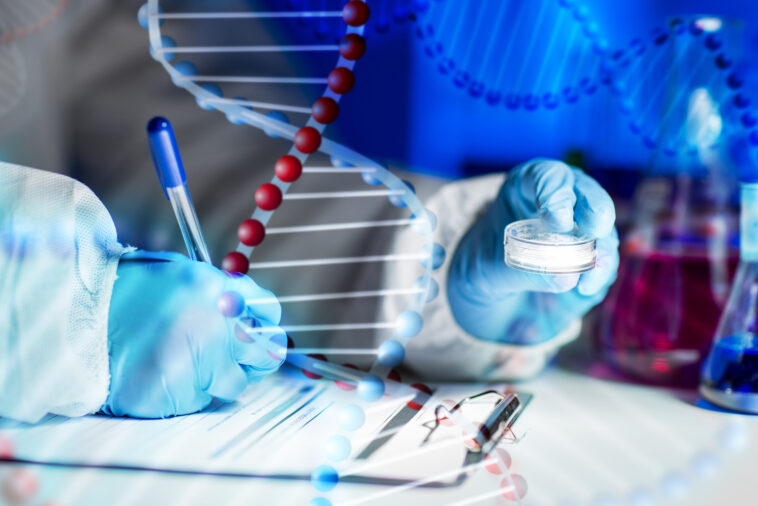Biotechnology answers human beings’ cries for help. From improving the quality of healthcare to removing pollutants from our surroundings – this field poses as the savior for human life.
The juxtaposition of biology with technology has aided human lives in almost every possible way. Ongoing researches project strides of innovation in numerous sectors, including environmental, healthcare, industrial, and agricultural fields. The innovative solutions discovered from research aid in making human lives better.
In recent years, biotechnology research showed a direct response to the coronavirus outbreak, along with developing vaccines to fight off the disease. Not only that, research is incorporated into other fields to formulate solutions for any inconveniences.
We’ve gathered a handful of research topics regarding biotechnology to provide you with the best picks! Stay tuned to learn more.
Research Topics in Biotechnology
Research topics open a lot of windows for you. They allow you to sympathize with human difficulties and motivate you to find solutions for their miseries. Topics you can consider are:
Breast Cancer Biomarker Identification

Breast cancer is extremely fatal affecting 1 out of 8 women in the US. Treatments for breast cancer include chemotherapy which uses radiation. However, there’s a chance of overtreatment if the root isn’t identified. Therefore, research is conducted which can pinpoint appropriate biomarkers for breast cancer.
Breast tissues are removed for analysis using the breast biopsy method. Earlier stages of this cancer are evaluated by examining sexual hormones like Estrogen Receptor, Progesterone Receptor, and Human Epidermal Growth Factor Receptor 2. Breast cancers can be inherited by visible mutations in the BReast CAncer gene 1 and BReast CAncer gene 2. New means of identifying biomarkers are necessary.
Gene Editing Using CRISPR-Cas9
A phenomenal gene-modifying equipment used to cut out a part of the DNA guided by its RNA is CRISPR-Cas9. Clustered Regularly Interspaced Short Palindromic Repeats are derived from the bacterial defense system while Cas9 is the molecular scissors.
A gene can be successfully deactivated by disrupting the original DNA sequence using this tool. Incorporating a DNA template with this tool can even allow the insertion of a new gene for repairing purposes. Finally, a gene can be removed by cutting each end and then tieing them together. So this tool needs to be researched for more gene editing techniques.
Hypoallergenic Milk Production
Milk allergy threatens a wide range of people. Beta-lactoglobulin is the protein in milk that flares up allergies. Scientists have come up with methods by genetically modifying cows to reduce the risk of this life-threatening protein.
So gene editing is performed to obstruct the genes that generate BLG. Moreover, combining cloning techniques with genome editing leads to the creation of a herd of cows lacking the genes responsible for BLG.
Other tedious techniques like enzymatic hydrolysis can break down BLG to minimize allergic reactions. However, these processes are time-consuming which is why new research results will boost hypoallergenic milk production.
Allergy-free Fermented Foods

Foods such as soybeans contain extreme allergens affecting a range of people. Glycinin and β-conglycinin are two globulins responsible to trigger allergic reactions. Therefore, a traditional method called fermentation is used for making hypoallergenic soybeans.
Fermentation of soybean seeds by Lacticaseibacillus casei, yeast, and Bacillus subtilis shows low allergy rates. Soybean proteins are broken down into polypeptides where both globulins are discarded, reducing allergenicity.
Two-step fermentation and multiple filtrations are carried out for soy sauce production to diminish allergenic substances. This means that fermentation leads to the reduction of allergenic reactions in fermented foods.
Biodegradation of Plastics
The piling up of plastic is gradually polluting the environment leading to choking hazards for animals. This is why the biodegradation of plastics is carried out. It involves breaking down polymers into tiny bits by manipulating fungal enzymes.
Biodegradation in polluted sites can be done by adding bacteria with plasmids to transfer the catabolic genes increasing their capacity for degradation.
Moreover, the insertion of mutated bacterial genes boosts the biodegradative capacity of their enzymes. Biodegradation includes the removal of polythene and plastic bottle disposal in remote areas. So biodegradation of plastic is essential for a safer environment.
Grey Water Treatment
Grey water gets drained from washing machines and showers. However, it can be treated using multilayer reactors for recycling purposes.
Grey water from toilet flush was passed through a multilayer reactor using a modified dual-porosity filtration technology. The upper layer was responsible for the removal of hair and other larger scraps of materials by the sedimentation process. Simultaneously, the lower reactors stimulated the breakdown of organic impurities in bulk. Here, filtration is carried out using a biofilm to trap even finer particles. Cleaner water comes out which is used in irrigation. Hence more treatment processes need to be researched for purifying wastewater.
Bioactive Compounds From Marine Sponges

Marine sponges are uniformly distributed in our oceans. Extracting essential bioactive compounds from them can benefit therapeutic purposes.
Sponges containing fungal strains can deliver two methyl compounds efficient in suppressing leukemia. Other derivatives can be used in the treatment of breast cancer. Marine fungi also possessed antibacterial activity towards MDR E. coli.
A lot of derivatives from marine sponges are incorporated for agricultural activities. Furthermore, fungi extracted from these sponges are also incorporated in the biodegradation of pesticides. Thus, research can find out innovative ways to use these bioactive compounds.
Bottom Line
Biotechnology research programs involve innovative means of tailoring biological compounds with technology for human benefit. Various biotechnological companies are highly dedicated to the research sector for coming up with new solutions. You can definitely use our ideas for research purposes if you tag along.
Research is extremely important in biotechnology to refine previously answered innovations. It helps women to win against breast cancer by identifying prognosis. Gene editing can be done to cure genetic disorders.
Hypoallergenic food products are invented by either genetically modifying the overall organism or using fermented food items. Biodegradation of plastics and wastewater treatment plans ensure a safer environment. Moreover, new bioactive compounds are also extracted from marine sponges.
All of this proves further research is required. This is how biotechnological research heals the world.




